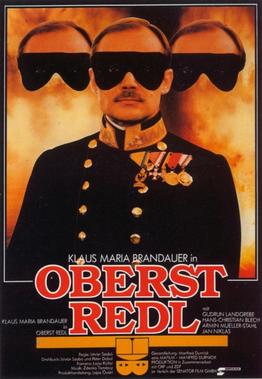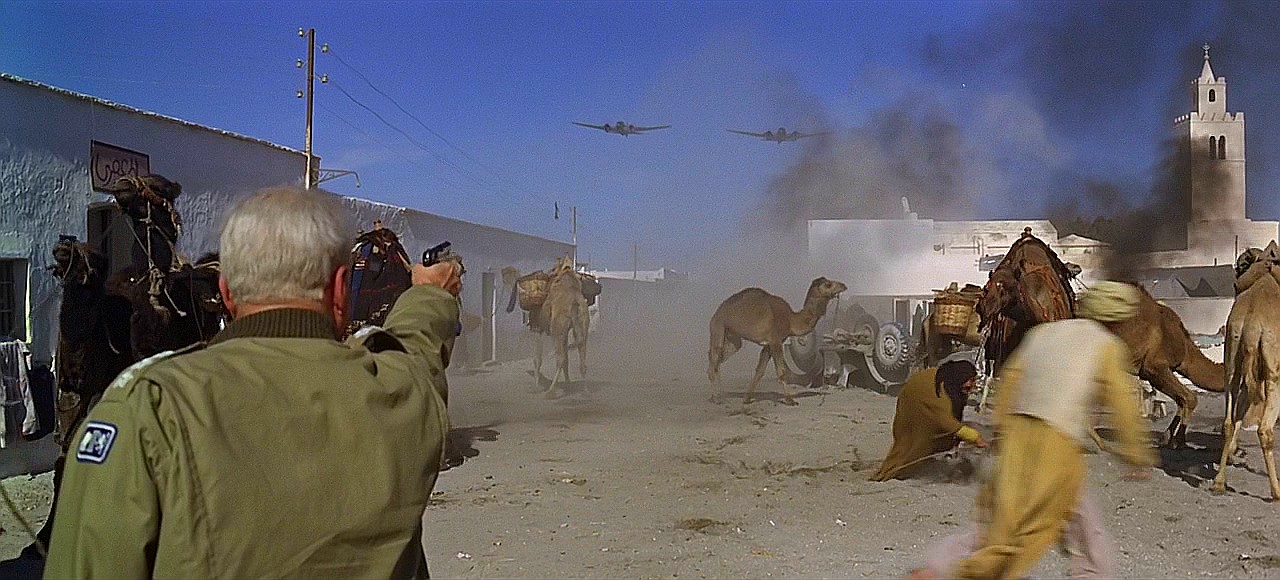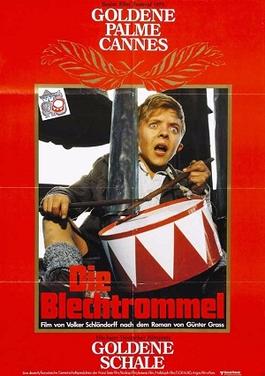SYNOPSIS: "The
Third Man" is set in post- WWII Vienna. An American novelist (Joseph
Cotton) visits to see a childhood friend (Orson Welles). He finds out the
friend is dead, but the circumstances are suspicious. He hooks up with his
friend's girl. He finds out that his friend was a racketeer responsible for
selling tainted penicillin on the black market.
The authorities are still looking for the charismatic profiteer which
culminates in a famous chase through the sewers.
BACK-STORY: “The Third Man” is a classic film noir released in 1949. It foreshadowed the boom in that genre in America in the 50s. It is a British film, however. It was directed by the acclaimed Carol Reed and is considered his greatest film. The screenplay is by Graham Greene. The British Film Institute in 1999 designated it the greatest British film of the 20th Century. It was awarded the top prize at Cannes and won an Academy Award for Cinematography (a no-brainer) and was nominated for Director and Editing. It was set and filmed in Vienna, including the scenes in its famous sewer system. The remarkable score is done with a musical instrument called a “zither”. The opening theme (“The Third Man Theme”) was an international hit. The movie was a hit with both critics and audiences. The rumors that Orson Welles actually directed are not true. He did have a lot of influence over the dialogue of his character, however.
BACK-STORY: “The Third Man” is a classic film noir released in 1949. It foreshadowed the boom in that genre in America in the 50s. It is a British film, however. It was directed by the acclaimed Carol Reed and is considered his greatest film. The screenplay is by Graham Greene. The British Film Institute in 1999 designated it the greatest British film of the 20th Century. It was awarded the top prize at Cannes and won an Academy Award for Cinematography (a no-brainer) and was nominated for Director and Editing. It was set and filmed in Vienna, including the scenes in its famous sewer system. The remarkable score is done with a musical instrument called a “zither”. The opening theme (“The Third Man Theme”) was an international hit. The movie was a hit with both critics and audiences. The rumors that Orson Welles actually directed are not true. He did have a lot of influence over the dialogue of his character, however.
TRIVIA: Wikipedia, imdb, TCM
1. Reed shot in
Vienna for six weeks. Because of time
constraints, he ran three camera crews – daytime, nighttime, and sewer. He worked twenty hour days, with the aid of
Benezedrine.
2. Welles worked
only one week on the film and his character has only five minutes of screen
time. When he arrived in Vienna, he took
one whiff of the sewer and declined to work in it. He eventually opened to the idea, but still
much of his footage is of body doubles or was filmed on a sound stage in
Britain. The final iconic image of his
hands on the grate is actually Reed’s hands.
3. Reed got a
Vienna fire brigade to water down the streets at night to get a proper
glistening look.
4. Reed wanted
James Stewart, but producer David O. Selznick had Joseph Cotten on
contract. Robert Mitchum was considered
until his arrest for marijuana possession.
Selznick proposed Noel Coward for Lime, but common sense prevailed.
5. Greene based
Lime on the infamous double agent Kim Philby.
Philby had been Greene’s superior in British Intelligence.
6. Because of the
popularity of the movie, Vienna created a tour of the sewer locations called
“Der Dritte Man Tour”.
7. “The Adventures
of Harry Lime” was a series of 52 half-hour radio episodes starring Orson
Welles. He wrote some of the scripts.
8. Although it is
clearly a British film, it was placed at #57 on AFIs original list of 100
Greatest Films. In 2008, it was ranked
#5 in the mystery category. It was #75
in the list of 100 Thrills. Lime was #37
on the Greatest Villains list. In 1999,
the British Film Institute named it the greatest British film.
9. Greene was
inspired by a trip to Vienna where he was told about the special police unit
that patrolled the sewer system. He
wrote a novella which became the basis for the script. The main difference between the treatment and
the final screenplay was the ending. In
the novella, Martins and Anna hook up and live happily ever after. Reed insisted on the downbeat ending of the
film and although Greene argued against it, he later admitted Reed was right.
Belle and Blade = N/A
Brassey’s = N/A
Video Hound = 5.0
War Movies = N/A
Military History = #80
Channel 4 = not on list
Film Site = yes
101 War Movies = no
Rotten Tomatoes = no
OPINION: I do not care what anyone says, this is not a war movie by any stretch of the definition. It is a movie set in post-war Vienna, true. I can accept movies set on the home front during the war, but not after the war. I make exceptions for movies like “The Best Years of Our Lives” because they deal with the after effects of a war on warriors. Neither Martins nor Lime appear to have fought in the war and even if they had, it is immaterial to the movie. The movie could be described as a Cold War movie, but then a ton of spy movies would have to be included as war movies. I cannot agree to that. With that said, this is undoubtedly one of the great movies of any genre. The score, the cinematography, the setting, the acting - all great. Do not watch this movie because it is a great war movie. Watch it because you love movies and want to be able to say you have seen one of the masterpieces of film history.
OPINION: I do not care what anyone says, this is not a war movie by any stretch of the definition. It is a movie set in post-war Vienna, true. I can accept movies set on the home front during the war, but not after the war. I make exceptions for movies like “The Best Years of Our Lives” because they deal with the after effects of a war on warriors. Neither Martins nor Lime appear to have fought in the war and even if they had, it is immaterial to the movie. The movie could be described as a Cold War movie, but then a ton of spy movies would have to be included as war movies. I cannot agree to that. With that said, this is undoubtedly one of the great movies of any genre. The score, the cinematography, the setting, the acting - all great. Do not watch this movie because it is a great war movie. Watch it because you love movies and want to be able to say you have seen one of the masterpieces of film history.









